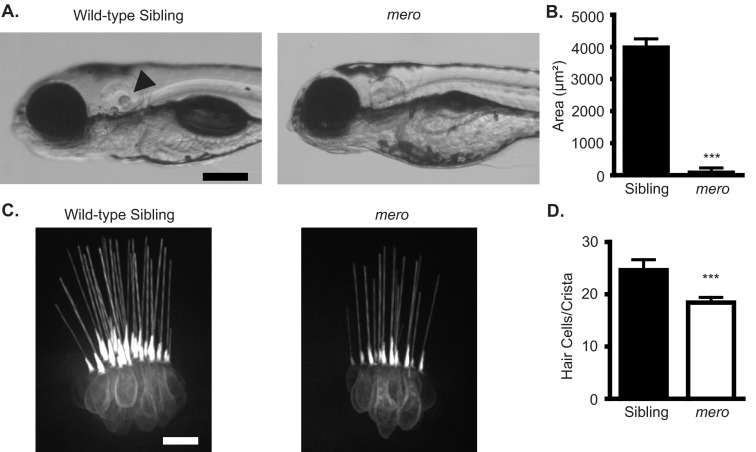Fig. 1.
merovingian mutants have inner ear defects. (A) merovingian (mero) mutants show multiple phenotypes including a failure to inflate their swim bladders, an enlarged yolk, and impaired otolith formation. Arrowhead points to otolith. (B) Quantification of the size of the posterior otolith in wild-type siblings and merovingian mutants. Otolith size is significantly reduced in merovingian mutants. Mutants were selected randomly and included eight fish lacking a posterior otolith and therefore having an otolith size of 0 (n=10 fish). (C) Hair cells expressing the brn3c:gfp transgene in the lateral crista of both wild-type siblings and merovingian mutants. (D) Quantification of the number of hair cells/crista in wild-type siblings and merovingian mutants. All three crista were used for counting. There is a significant reduction in hair cell number in merovingian mutants (n=9 fish). ***P<0.0001 by Student’s t-test; error bars indicate s.d. Scale bars: 250 μm (A), 10 μm (C).

